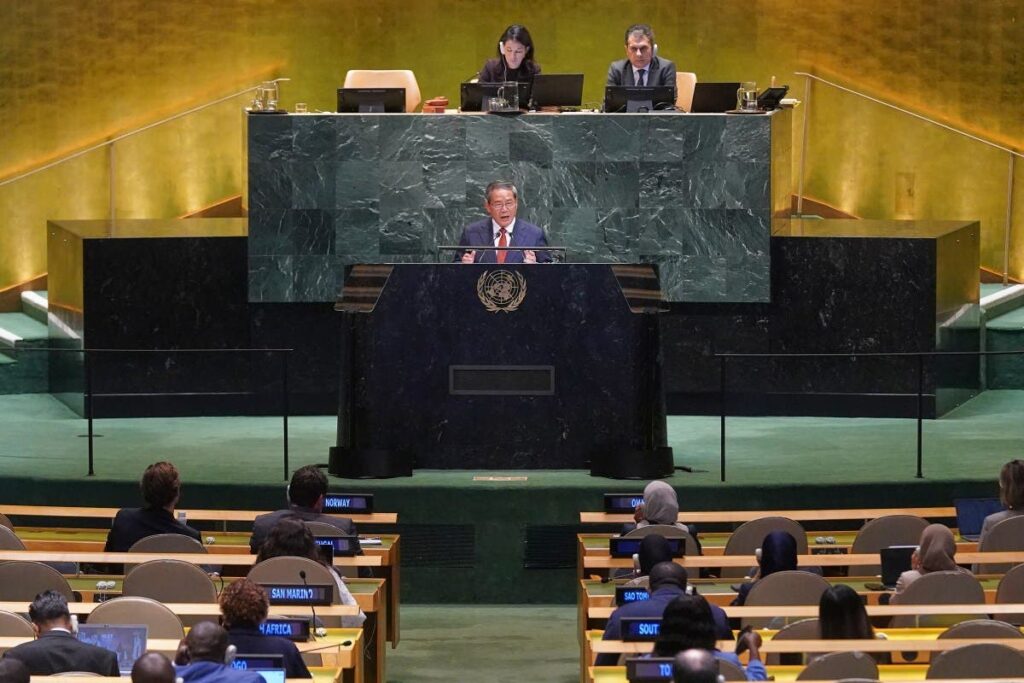The Chinese government issued a rare white paper this week to reinforce its sovereignty claim over Taiwan as the United Nations General Assembly wrapped up its annual gathering in New York.
The position paper released by China’s Foreign Ministry on Tuesday was part of an escalating war of words over wartime legalese that has unfolded across interested capitals in recent weeks.
The official document was released on the last day of the U.N. General Assembly’s high-level debate and followed earlier comments by the American Institute in Taiwan (AIT), Washington’s de facto embassy in Taipei, which had openly rejected Beijing’s interpretation of World War II-era agreements that China said proved its claimed to the self-ruled island democracy.
Why It Matters
The United States officially takes no position on sovereignty over Taiwan, but an AIT statement given to Taiwan’s semi-official Central News Agency (CNA) last month—later backed by the U.S. State Department—marked a rare instance where the U.S. government publicly declared the island’s postwar status as undetermined.
Washington is Taipei’s strongest international backer, its main arms supplier, and supports the so-called “status quo” in the Taiwan Strait, which keeps the island autonomous from Beijing’s control. China, meanwhile, considers Taiwan—a Japanese colony from 1895-1945—a red line in its relations with the U.S. and has not ruled out the use of force to achieve what it calls “unification” with the Chinese mainland.
Taiwan’s Foreign Ministry welcomed the U.S. move to support its position against the claims by China—asserted since Mao Zedong’s Communist forces seized power from Chiang Kai-shek’s nationalists, who later fled to the island—although the American position left open the possibility that Taiwan could one day be governed by an authority other than the one currently in Taipei.
Newsweek reached out to the Chinese Foreign Ministry via email outside normal office hours.
What To Know
In 1971, the U.N. General Assembly Resolution 2758 transferred China’s seat at the body from Taipei to Beijing, formally expelling Chiang’s Republic of China government in the process. China’s white paper described the vote as having “once and for all” resolved the question of China’s representation, saying it “fully embodies the one-China principle.”
Beijing argued there was “no such thing as two Chinas or one China, one Taiwan.” It accused “external forces” of trying to manipulate the U.N. framework. Although Resolution 2758 does not mention Taiwan, Chinese officials have long used the text as a legal basis for Taiwan’s exclusion from international institutions, noting that U.N. documents refer to the island as “a province of China.”
Taiwan and its partners counter that Resolution 2758 addressed representation at the U.N. but did not settle Taiwan’s status—the heart of the current dispute.
Last month, during celebrations marking the 80th anniversary of Japan’s surrender at the end of World War II, China sought to reinforce its claim to Taiwan by framing the contested territory as having been returned to the mainland from Japanese occupation.
An AIT spokesperson told CNA that Beijing was “deliberately distorting” documents like the San Francisco Treaty to justify its coercion of Taipei. It stressed that “none of these documents determined Taiwan’s final political status,” calling China’s narrative “completely false” and part of a campaign to isolate Taiwan internationally.
What People Have Said
Lin Chia-lung, Taiwan’s foreign minister, said: “Our country and the People’s Republic of China are not subordinate to each other, and the People’s Republic of China has no right to represent Taiwan in the international community.”
What’s Next
China is expected to continue pressuring Taiwan while maintaining near-daily military flights around it and staging large-scale drills. U.S. intelligence has assessed that Chinese President Xi Jinping has directed the People’s Liberation Army to be capable of moving against Taiwan by 2027.
Read the full article here
